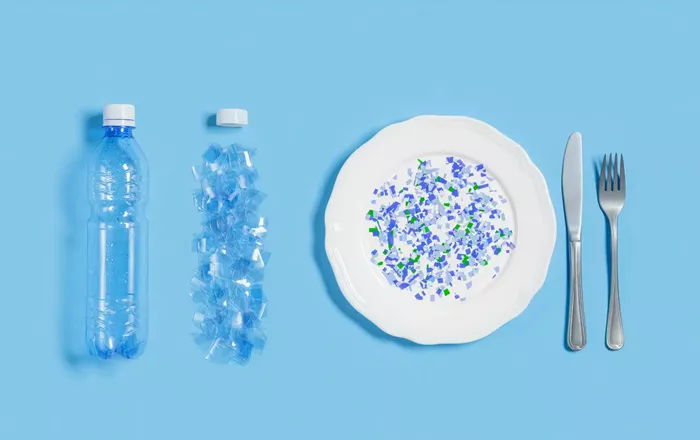As microplastics continue to infiltrate every corner of our environment, new studies are highlighting just how deeply these tiny particles have embedded themselves within our bodies. From the air we breathe to the food we consume, microplastics are now a ubiquitous presence, raising crucial questions about their potential health risks.
A new wave of research is shedding light on the alarming levels of microplastics—and their even smaller counterparts, nanoplastics—found in human tissues. Recent findings show that these particles have been detected in a range of organs, including the lungs, liver, heart, brain, gut, and even the placenta. This growing body of research, once focused on the environment, is now turning the spotlight on human health.
Microplastics, defined as plastic particles smaller than 5 millimeters, are not only found in the oceans and waterways but also in our food, drinking water, air, and even household dust. These tiny particles can come from a wide variety of sources—everything from food packaging and synthetic clothing fibers to car tires and personal care products. But what happens when they enter the human body, and what risks do they pose to our health?
1. What types of microplastics are inside us?
Microplastics come in many forms, varying in size, shape, polymer type, and chemical makeup. Research has shown that these particles accumulate in our environment over time, and while some enter the body through consumption, others are inhaled or absorbed through the skin. However, detecting and tracking these particles remains an ongoing challenge. According to Dr. Leslie, “The complexity of microplastics makes it hard to study. They come in so many forms, and the scientific community is still figuring out how to properly measure and monitor them inside the human body.”
2. Do microplastics ever leave the body?
While some microplastics are expelled from the body through waste (urine and stool), others seem to persist within organs and tissues. Dr. Joana Prata, a researcher at CESPU in Portugal, explains, “In animals, most particles exit the body, but only a small portion is absorbed. The problem is that constant exposure means that these particles are continuously entering the body, making it difficult for us to track how much stays.” As microplastics accumulate, scientists worry that the long-term effects may be more damaging than initially thought.
3. What are the potential health risks of microplastics?
While conclusive evidence is still needed, there are growing concerns about the health impacts of microplastics. Recent studies in animals and humans have suggested possible links to respiratory, digestive, and reproductive issues. More alarmingly, research has found microplastics in artery plaques, with potential associations to heart attacks, strokes, and other cardiovascular diseases. Additionally, some studies have raised concerns about increased cancer risks and inflammation caused by oxidative stress from these particles.
Researchers like Dr. Tracey Woodruff from UCSF argue that it’s time to take action. “We are already seeing troubling signals from animal studies, and it’s likely that similar effects could occur in humans,” she states.
4. What’s inside plastics that makes them dangerous?
Plastics are often laden with harmful chemicals such as bisphenol A (BPA) and phthalates, substances known to disrupt hormones, harm reproductive health, and increase the risk of metabolic conditions like obesity. PFAS, also known as “forever chemicals,” have also raised alarm due to their persistence in the environment and human body. These chemicals may leach out from microplastics, adding another layer of risk to our health.
How Can We Reduce Our Exposure to Microplastics?
Given the widespread nature of microplastics, reducing exposure can be a challenge. However, experts recommend several steps to help mitigate potential risks. These include:
Avoiding single-use plastics: Whenever possible, reduce consumption of products packaged in plastic, and opt for reusable containers.
Minimizing plastic food packaging: Try to choose fresh foods or those with minimal plastic packaging.
Filtering tap water: A water filter can help reduce the concentration of microplastics in drinking water.
Limiting plastic in household items: Choose fabrics like wool and linen instead of synthetics, and use natural cleaning products without plastic packaging.
Improving air quality: Open windows, use air purifiers, and vacuum regularly to minimize dust that may contain microplastics.
Despite these individual efforts, experts agree that a more comprehensive approach is needed to tackle plastic pollution at its source. Dr. Susanne Brander, an ecotoxicologist, suggests that collective action, including stricter regulations on plastic production, will be essential to reduce global exposure.
“We need to take microplastic contamination seriously,” says Dr. Woodruff. “This is not just an environmental issue—it’s a health issue, and we must act now before the damage becomes irreversible.”
Read more:
- What Are The Effects Of Microplastics On The Body?
- Microplastic Ingestion by Humans Has Increased Sixfold Since 1990
- Pervasive Developmental Disorders: Types, Symptoms & Treatment


